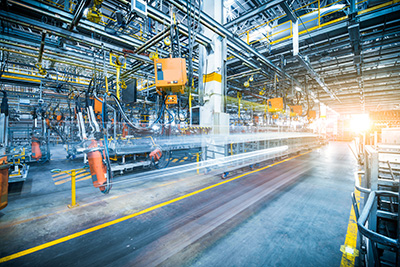 Few advances in manufacturing have had an impact like that of automation. When it comes to repeatable tasks, robotics have been able to increase speed, accuracy, and efficiency to an extent many never dreamed of. However, despite the improvements, manufacturers often struggle when a small error or a minor adjustment requires a stoppage on the assembly line. But adding machine vision to your existing motion control can improve your factory’s production.
Few advances in manufacturing have had an impact like that of automation. When it comes to repeatable tasks, robotics have been able to increase speed, accuracy, and efficiency to an extent many never dreamed of. However, despite the improvements, manufacturers often struggle when a small error or a minor adjustment requires a stoppage on the assembly line. But adding machine vision to your existing motion control can improve your factory’s production.
Machine Vision and Motion Control: Two Essential Technologies
Motion control is critical to any automated industrial process. Raw materials, components, and equipment must be precisely controlled when moved to meet strict manufacturing requirements. Consumers demand high-quality products. Even the slightest deviations can result in premature failures or unsightly flaws.
In recent years, machine vision has become a must-have for manufacturers. By combining high-quality industrial cameras with complex algorithms and artificial intelligence, robotics and other connected equipment can now “see” their environment. This gives automated processes the ability to inspect materials, guide tooling, and make adjustments on the fly.
Machine Vision Takes Motion Control to the Next Level
Before machine vision, motion control systems counted on everything to go right 100% of the time. A slight change to any variable, such as a minor change to tolerances or a slight fluctuation that affected timing and movement, could result in a catastrophe on the production line. Machine vision now enables motion control systems to adapt because they can “see” to move products or tooling as needed.
Machine vision also lets manufacturers build more flexible assembly lines. Not long ago, manufacturers could only run one SKU at a time. But now automation systems can use machine vision to identify each component coming down the line or scan barcodes to adjust the task they need to perform, eliminating the need for stoppages to reset tooling.
Motion Control Boosts the Capabilities of Machine Vision
Machine vision is used for many tasks, from scanning for an object to measuring dimensions to quality inspection. Machine vision can answer such questions fast, repeatedly, and with very high accuracy. But that accuracy depends on certain factors like system design, lighting, and even just how well the camera sees the parts.
Motion control technology boosts the performance of vision systems by optimizing positioning. Motion axes can position parts in front of the image sensor or transfer the imaging sensor over the parts. Parts can be repositioned for better illumination or to adapt to lighting conditions. Orientation of the part or camera can be adjusted to capture a sequence of images from different angles.
Motion systems integrators are increasingly adding machine vision and expanding usability. Smart cameras can allow entire automation systems to perform their own calibration routines. Added features like autofocus and integrated lighting will eventually let manufacturers deploy vision and motion automation with a simple installation.
